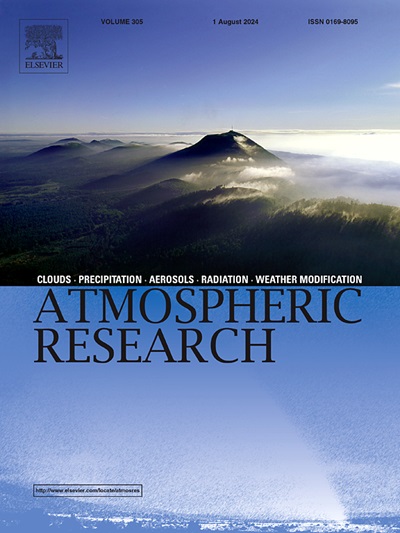Improved spatial representation of precipitation and air surface temperature over highlands of the southern tropical Andes (Lake Titicaca region) during an austral summer using the WRF model
IF 4.5
2区 地球科学
Q1 METEOROLOGY & ATMOSPHERIC SCIENCES
引用次数: 0
Abstract
Due to its complex topography, the Lake Titicaca region, located in the southern tropical Andes, presents great challenges for atmospheric modeling. This study aims to improve the representation of precipitation and air surface temperature using the Weather Research and Forecasting (WRF) model at high spatial resolution (2 km), during the austral summer of 2020. We conducted 11 experiments with different configurations of topography, land use, physical parameterizations, and lake surface temperature (LST). Each experiment was evaluated considering in-situ data from the Peruvian-Bolivian region and gridded precipitation products.
For precipitation, the best configuration, with an average bias close to zero mm, includes using the GMTED2010 topography (not smoothed) and the land use data of Eva et al. (2004), along with the Purdue Lin microphysics and the Grell 3D cumulus scheme. For air temperature, the best configuration, which showed an average underestimation between 0 and − 0.5 °C, included the same topography and land use, along with the parameterization of the SENAMHI Operational Model (SOM), including the WRF Single Moment 3 microphysics and the Kain-Fritsch cumulus scheme.
In the last experiment, the sea surface temperature (SST) was updated, resulting in an average LST increase of +1.8 °C over Lake Titicaca. This resulted in an increase in the precipitation bias (82.2 %) due to increased evaporation and convection over the lake and decreased southwestward moisture transport. These results highlight the sensitivity of the WRF model to parameterization choices and SST forcing data, emphasizing the importance of any changes in these variables.
利用WRF模式改进了南半球夏季热带安第斯山脉南部高地(的的喀喀湖地区)降水和地表温度的空间表征
由于其复杂的地形,位于热带安第斯山脉南部的的的喀喀湖地区对大气模拟提出了巨大的挑战。本研究旨在利用高空间分辨率(2公里)的天气研究与预报(WRF)模式改进2020年南方夏季降水和空气表面温度的表征。在不同地形、土地利用、物理参数化和湖泊表面温度(LST)配置下进行了11项实验。考虑到秘鲁-玻利维亚地区的现场数据和网格化降水产品,对每个试验进行了评估。对于降水,平均偏差接近零毫米的最佳配置包括使用GMTED2010地形(未平滑)和Eva等人(2004)的土地利用数据,以及Purdue Lin微物理和Grell 3D积云方案。对于气温,最佳配置在0 ~ - 0.5°C之间显示出平均低估,包括相同的地形和土地利用,以及SENAMHI业务模型(SOM)的参数化,包括WRF单时刻3微物理和Kain-Fritsch积云方案。最后一次实验对海表温度(SST)进行了更新,导致的的喀喀湖的海表温度平均上升了+1.8°C。由于湖上蒸发和对流增加,西南水汽输送减少,降水偏倚增加(82.2%)。这些结果突出了WRF模式对参数化选择和海温强迫数据的敏感性,强调了这些变量的任何变化的重要性。
本文章由计算机程序翻译,如有差异,请以英文原文为准。
求助全文
约1分钟内获得全文
求助全文
来源期刊

Atmospheric Research
地学-气象与大气科学
CiteScore
9.40
自引率
10.90%
发文量
460
审稿时长
47 days
期刊介绍:
The journal publishes scientific papers (research papers, review articles, letters and notes) dealing with the part of the atmosphere where meteorological events occur. Attention is given to all processes extending from the earth surface to the tropopause, but special emphasis continues to be devoted to the physics of clouds, mesoscale meteorology and air pollution, i.e. atmospheric aerosols; microphysical processes; cloud dynamics and thermodynamics; numerical simulation, climatology, climate change and weather modification.
 求助内容:
求助内容: 应助结果提醒方式:
应助结果提醒方式:


